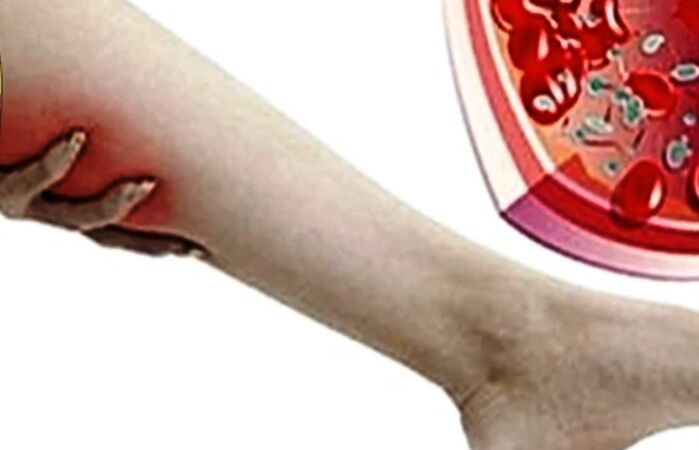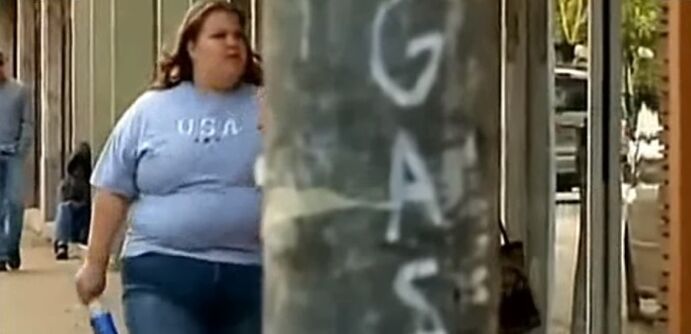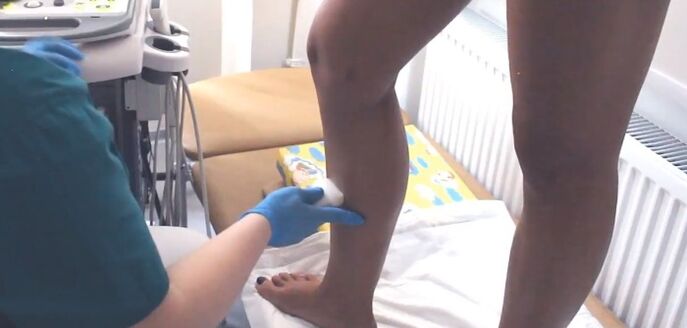The pathological processes that affect the vascular system are a serious body risk.This applies to any diseases of this type, regardless of their scale and location.In particular, this applies to varicose veins, which in most cases affects the vessels of the legs.
In the modern world, varicose veins are one of the current problems, many people are the subject of its development.Pathology is not only a cosmetic problem, but damage to the vessels in the legs has serious consequences.It is therefore important to understand the mechanisms of varicose veins, to know its symptoms, and to have ideas for treatment.
The mechanism of the development of varicose veins
Varicose veins or varicose veins are called a disease in which the mentioned vessels are subjected to pathological changes in the following nature:
- Expansion, that is an increase in the lumen of the vessel.
- Stretching or more recent vein extension.
- The thinning of the vascular wall, which is why the vein becomes more fragile and is more proposed to physical disabilities.
- The exhaustion or gradual destruction of the valve apparatus, which plays a decisive role in the process of transporting blood back to the heart.
- In the late stages of the disease due to deformity of the veins, nodes or "vascular stars" are formed, resembling aneurysms.
All described violations lead to two types of consequences, aesthetic and functional, where the second type is much more weight.If we are talking about the aesthetic factor, we are talking about the fact that subcutaneous vessels increase in size, swell and look closer to the surface of the skin, which is why they become clearly visible even with the naked eye.As the disease progresses and increased deformity of the veins, they begin to look like hugs, and nodes appear that worsen even more aesthetic appearance.

But functional problems are more serious and dangerous because we are talking about a violation of the main function of the vein - the transport of blood from organs to the heart.Varicose contributes to stagnant processes in the vessels, due to the depletion of the valves, the blood is not fully evacuated, stagnant.This leads to local toxic lesions, as well as to a gradual increase in the pressure in the vessels.After all, in the short stages of the disease, the vessels cannot cope with excess pressure, tears appear in the dark walls, leading to hemorrhage, formation of hematomas and trophic ulcers.
Varicose
The above has repeatedly stated that the degree of damage and deformity of the veins depends on the stage of progression of the disease.Therefore, it is worth mentioning that it is customary to classify varicose veins according to three stages of development:
- The first and easiest form of the disease is compensatory.It is characterized by minor deformation, it is often impossible to determine without a proper diagnosis.The symptoms in this case are scarce or completely absent.
- Subcompensation or the middle stage - veins appear on the surface of the skin, enlargement, such as deformation, are insignificant.However, vessels and vascular networks are already clearly visible, and in the evening of patients, increased feeling of fatigue, cracking, swelling of pain, small pain can be impaired.It is characteristic that by the morning (after night's sleep or long -term rest) the symptoms disappear.
- The stage of decompensation is the worst - we are talking about a serious damage to the veins, their pronounced deformity.The vessels are not only very visible, they look like tubercles and stick out on the surface of the skin, nodes, eczema, hematomas appear.The symptoms described in the form of pain, edema and other unpleasant sensations intensify.
It is important to understand that initially varicose veins do not pose a serious danger and over time the treatment begins with the progression of the disease.But if the treatment is not engaged, there is a high risk of complications, including thrombosis, inflammatory processes in the veins, the formation of trophic ulcers, and constant pain syndrome.
Factors for the development of the disease
Knowledge of the causes and factors predisposing to the development of varicose veins not only helps fight the pathological process, but also prevent its development.These causes and factors are the following:
- Genetic predisposition - in this case we are talking about hereditary predisposition to the weakness of the venous valves, as well as the underdeveloped development of the connective tissues of the walls of the blood vessels.Such developmental anomalies increase the development of varicose veins, since the valve apparatus is initially subject to functional disorders.
- The professional component - the risk group is also guided by people who, by virtue of their professional activity, are forced to spend a long time on their feet for a long time, especially those who cost a lot (hairdressers, sellers, cooks, surgeons, etc.).
- Overweight
 - The accumulation of excess weight leads to increased legs, in which case the level of cholesterol in the blood increases, which also has a negative effect on the functioning of the vascular system.The higher the degree of obesity, the more the fact is the fact of the development of varicose veins.
- The accumulation of excess weight leads to increased legs, in which case the level of cholesterol in the blood increases, which also has a negative effect on the functioning of the vascular system.The higher the degree of obesity, the more the fact is the fact of the development of varicose veins. - They contribute to the appearance of varicose veins of the pathology of blood coagulation.Due to the increase in blood platelets, blood becomes more viscous, there is a risk of blood clots.All this prevents normal blood circulation, causing varicose veins.
- Another factor in the development of the disease is serious hormonal disorders.Women are more affected by such problems, especially during pregnancy, menopause or taking hormonal drugs.
The list shows only the main factors in the development of varicose veins, in fact there are many more.For example, we add uncomfortable shoes or go to high heels, alcoholism, smoking, diabetes, mechanical damage to blood vessels, etc.
Clinical picture
Very often varicose veins in the early forms of development do not show at all, the symptoms appear in 2-3 stages of the progression of the disease.Nevertheless, it is worth considering symptoms, starting with the first signs:
- The first symptom showing the appearance of varicose veins is the fatigue in the legs.Initially, this feeling is insignificant, it feels mainly in the evening.But as the disease develops, fatigue is worried more and more often, it becomes more intensive.
- The feeling of squeezing and pain - start worrying from the second stage, initially also closer to the evening, and in the morning they disappear completely.But as before, with the progression of varicose veins, they become more intensive, after all, they are worried.
- The protruding veins and the vascular network - this characteristic is also becoming more clear with the development of the pathological process.Initially, the veins are simply visible more strong than usual, in the short stages on which tubercles appear, the form "stars" appear.
- Swelling - they can start to worry immediately, in such cases their causes seem incomprehensible, and the swelling itself is so insignificant that it is not practically felt.Over time, the legs swell more and more, causing a lot of discomfort and increases pain.
- Convulsions - It is believed that if a person is systematically tormented by convulsions that cover the muscles of the calf or foot, it can also be signs of varicose veins.
- Hyperthermia - occurs in the late stages of the development of the disease and is expressed in a change in skin color, the skin of the feet becomes cyanotic.
Diagnostic methods
In order to treat varicose veins, as effective as possible, the exact understanding of what stage of development the disease is and evaluates the degree of hemodynamics.To do this, you need to go through a number of diagnostic measures:

- The initial examination, during which the doctor detects the patient's complaints, collects anamnesis, and also conducts a visual examination and palpation of problem areas.
- Ultrasound scanning to get acquainted with the dynamic characteristics of blood flow.
- Duplex vein scanning is one of the most information diagnostic methods that provides a detailed visual picture of blood flow rate in different parts of the vascular canal.
- Phlebography using contrast matter that is introduced into the veins studied.
Varicose veins
The fight against varicose veins of any severity requires contact with a phlebologist who will make a treatment regimen based on the diagnostic data obtained.
Drug therapy
The main effect expected of medication is a reduction in vein pressure by eliminating stagnant processes, restoring normal circulation.In addition, symptomatic treatment may be required within therapy.Generally, the doctor may prescribe medicines to such groups:
- The venotonics and phlebotonics - designed to improve the leakage of lymph and normalize blood circulation, perform the main task of treatment.
- NSAIDs Medicines - Stop the painful sensations and also have an anti -inflammatory effect.
- Anticoagulants to reduce blood viscosity and prevent thrombosis.
- It is also recommended that people with varicose veins wear a special compression linen.
Only a doctor is committed to determining the need to use each medicine and its appointment.In addition, drug therapy not only allows the disease to progress, it is impossible to return to deformed vessels the previous condition with conservative treatments.
Traditional medicine
Folk remedies are not able to have an equally serious therapeutic effect as traditional methods of medicine.However, Grandma's Recipes are an excellent help for drug treatment, so we'll look at some of the most effective recipes:
- Tomato compresses simply cut the tomato with slices and attach to the problem areas for 15-20 minutes.Tomatoes contain carotenoid pigment that promotes strengthening and toning veins.
- You can make a potato compress to put your feet clean and tie it for 2 hours.The same method works using cabbage and kalanchoe leaves, but cuts should be made of these plants.
- It is also recommended to rub your feet with apple cider vinegar every day before going to bed, the course of treatment is 30 days.
Surgical treatment
Surgery in the fight against varicose veins is the most effective method that radically solves the problem, not just limiting the disease.Surgical treatment methods include:
- Sclerotherapy - the introduction of a special substance into the venous lumen, which adheres to the vessel, resulting in it disappears independently, replaced by connective tissue.
- Laser exposure is applicable to blood vessels located near the surface of the skin.The laser irradiation creates the effect of sclerosis in Vienna, resulting in the vessel disappearing.
- Flbectomy - the dressing of the deformed vein in the place with the subsequent removal of its trunk.
